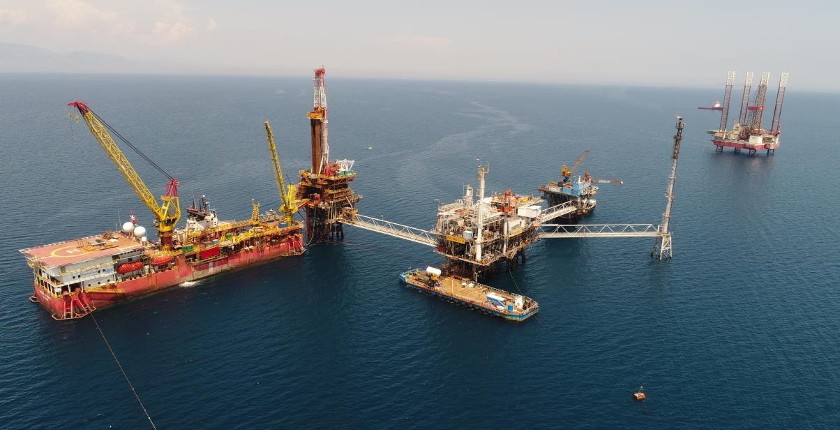
Photo: Energean
Energean’s carbon capture and storage (CCS) project for depleted wells in the Prinos area, in the northern part of the Aegean Sea, has entered the phase of final preparations. The company estimates the project will be put into operation in three years.
The CCS project envisages storing CO2 under Energean’s maritime oil fields in the Prinos basin, located in the Gulf of Kavala in the Aegean Sea, near the island of Thassos. The project envisages the exploitation of depleted wells at the Prinos and Epsilon oil fields. Energean noted that it has exhausted three oil wells in the area since 2009.
The idea is to prepare subsurface geological reservoirs where carbon dioxide captured from industrial emissions will be transported by pipeline or ship.
Carbon is planned to be permanently stored in used and depleted wells, at depths from 1,900 to 4,200 meters. The storage volume is estimated at 93.4 cubic kilometers.
Energean selected United States–based company Halliburton to produce a feasibility study. A project presentation will be held in April, and it was announced the system could be put into operation within three years.
The Prinos concession can receive overall emissions from the Greek manufacturing sector for 10 years, starting from 2025, the oil company said. Energean, which originated in Greece, is headquartered in London.
The CCS project will be supported by EU funds
Oil companies are turning towards CCS technologies to achieve carbon neutrality. On the other hand, critics argue such solutions are inefficient and that CCS is an excuse for the fossil industry to exploit oil and gas further.
Nevertheless, the project in Prinos was included in the National Recovery and Resilience Plan Greece 2.0 for grants and cheap loans. The company has also submitted an application to the European Union’s Innovation Fund.
Energean signed a memorandum of understanding last month with Shell Egypt on cooperation in the decarbonization and energy transition of Egypt. The company announced it would contribute to the efforts using the experience from the project in Prinos.
According to Energean, the main challenge of CCS technology is to achieve the ability to connect sizeable carbon dioxide emitters with appropriate geological structures.









Be the first one to comment on this article.